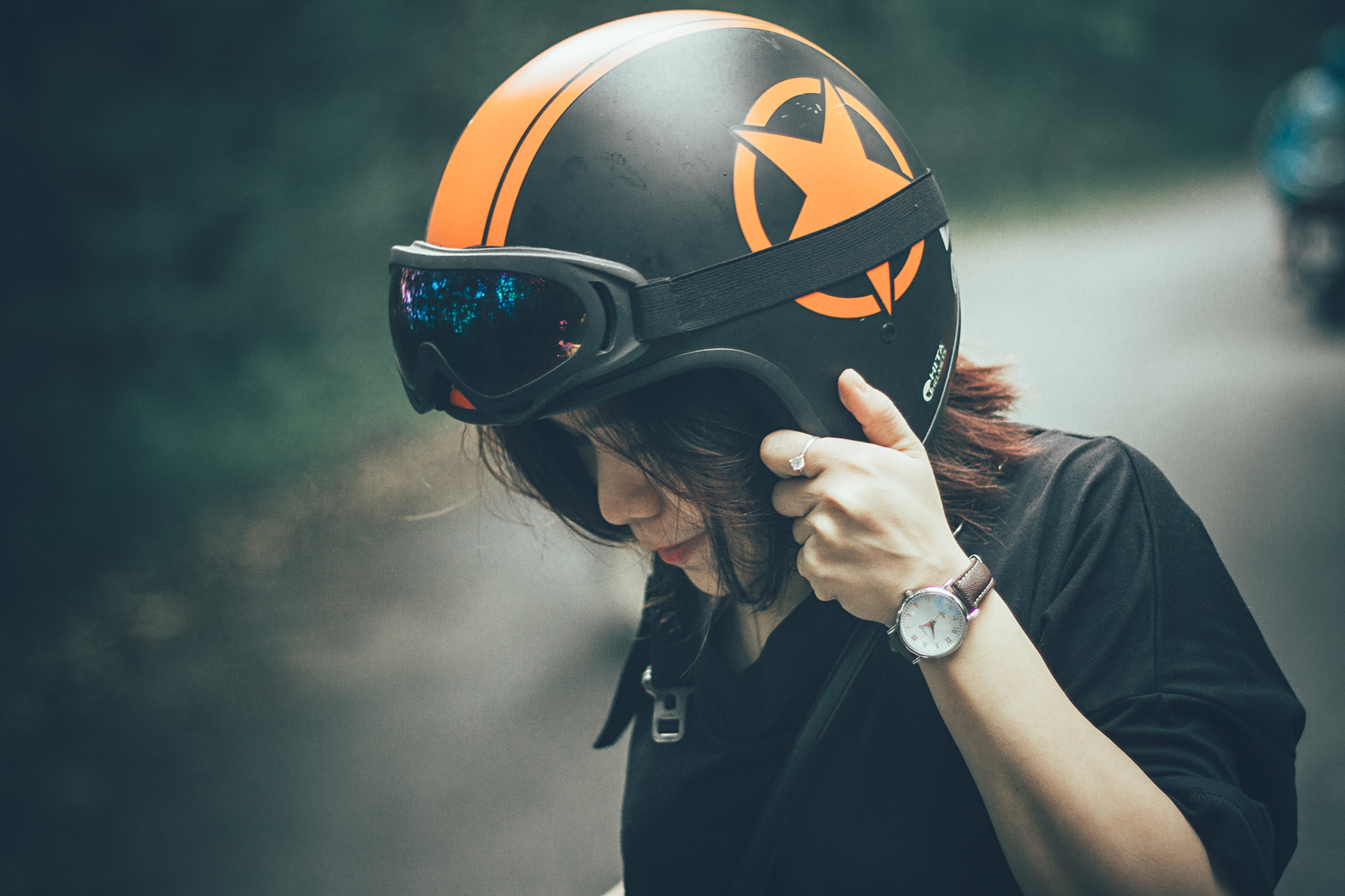Practice Areas
Choose the Right Motorcycle Helmet

Driving a motorcycle comes with inherent risks: exposure to the elements, higher levels of fatalities, and more sensitivity to changing road conditions. Choosing the right motorcycle helmet can reduce the risk. According to the Center for Disease Control, motorcycle helmets saved an estimated 1,859 lives in just one year.
Motorcycle helmets are a necessary piece of gear for every single ride a motorcyclist takes. Make sure you’re getting the right helmet by following these simple steps.
1. Understand Protection
Motorcycle helmets come in a number of styles that offer a variety of different protection. Understanding the different offerings is the first step in choosing a helmet.
Half-shell helmets are built with a half-dome of hard material and a varying amount of padding or other soft material to cover the rest of the head. Half-shell helmets offer the least amount of protection for the dangers of the road.
Open-faced helmets surround the top and back of the head with hard material. Open-face helmets may or may not have optional protective covering for the face and chin but do no provide hard materials for this area. Open-faced helmets are convenient in situations where a ride would want to speak freely while wearing a helmet, such as at a drive-thru or in a slow moving pack. But these helmets expose the chin and face to dangers of the road and reduce the amount of protection in the case of a crash.
Full-faced helmets surround the head, back of the head, chin, and forehead with hard material. This level of protection is highly recommended for any type of highway riding and will offer the best chance at reducing head injury in the case of a crash. Most research recommends riders use full-faced helmets to protect from both road debris and injuries in the case of a crash.
2. Look for DOT Approval
The Department of Transportation (or DOT) regulates and issues their approval to motorcycle helmets that meet their rigorous safety requirements. All helmets approved by the DOT protect the wearer’s head and brain in the case of a crash. Though an approval by the DOT does not ensure complete safety in a crash, it is a key measure to be sure that any helmet purchased is made with protection in mind.
To gain a DOT approval, a helmet must withstand rigorous tests in both safety and durability. Degrees of impact, level of protection, and weight all factor in to DOT approval. Any helmet with the approval of the Department of Transportation will have the letters “DOT” printed on the helmet itself or on a sticker affixed to the helmet.
3. Buy the Right Fit
If a helmet is too tight or too loose it can have more serious consequences than simply wearer discomfort. In an impact, a helmet that fits can save a life. To measure your head for a motorcycle helmet, begin with a soft tape measure. Wrap the tape measure around your head about a half inch above the eyebrow area. Note this number and keep it handy when shopping for motorcycle helmets. Each helmet company publishes their sizing guide. Compare your measurement with their sizing guide and choose a helmet closest to your measurement.
In addition to head size, it is important to determine your head shape. Motorcycle helmet manufacturers build their helmets to fit three typical head sizes: long oval, intermediate oval, and round oval. To determine your head shape, take a picture of the top of your head or ask a friend to take a look. A long oval head will have a longer distance from front to back than side to side. An intermediate oval resembles a round head, with a shorter distance from front to back than side to side. Most helmets are built with this shape in mind. A round oval is a head that appears to have a longer distance from side to side rather than front to back. Understanding and purchasing for your head shape can greatly increase the comfort and safety of your helmet.
4. Be Sure It’s Comfortable
Above all, a helmet should be worn at all times. To be sure the helmet you have purchased is comfortable enough to wear any time you ride your motorcycle, take it for an off-road test drive. Wear the helmet for 30 minutes when you are not riding your motorcycle. If the helmet is snug but comfortable, take it out on the road for a real time test drive. If your helmet is in any way uncomfortable, consider restarting your search. An uncomfortable helmet is often an unworn one.
No one’s life is worth the risk of a ride without a helmet. Invest in a helmet with proper protection and fit. Wear it every time. Take every precaution to protect your life while you ride.
If you or a loved one has been injured in a motorcycle accident, helmet or no helmet, the lawyers at Deliso Law can help fight for the compensation you deserve. Call today for a free consultation at (718) 238-3100.
by Allison Theresa
